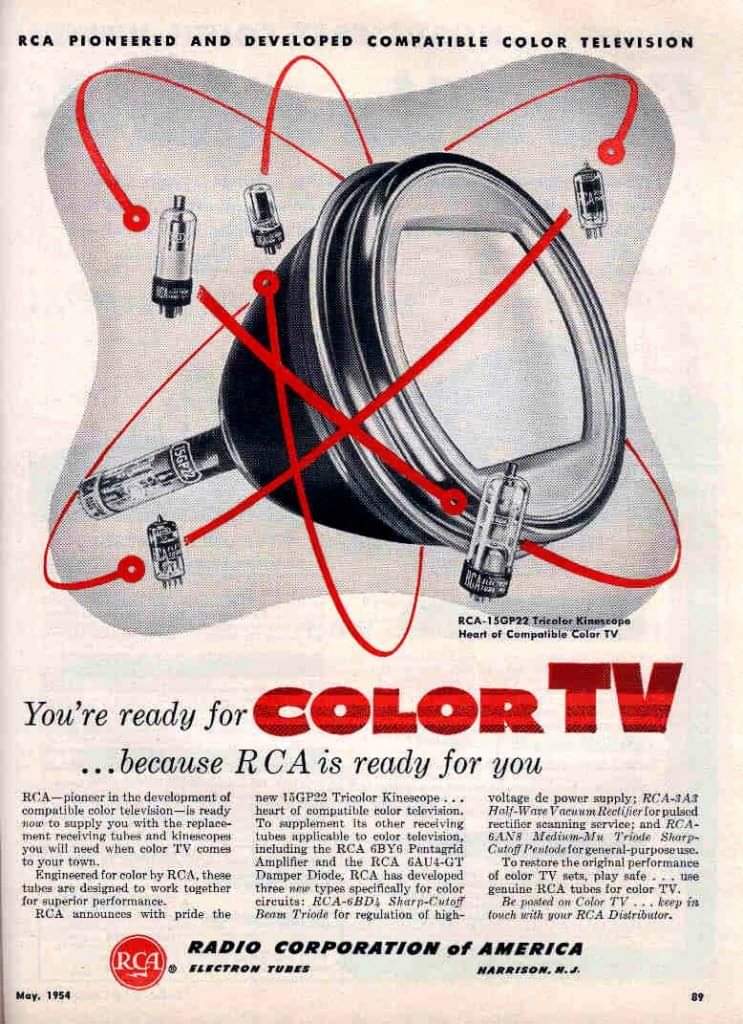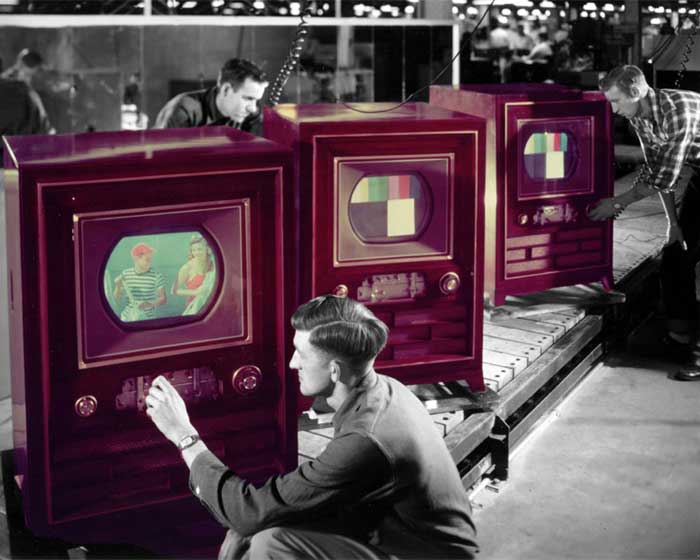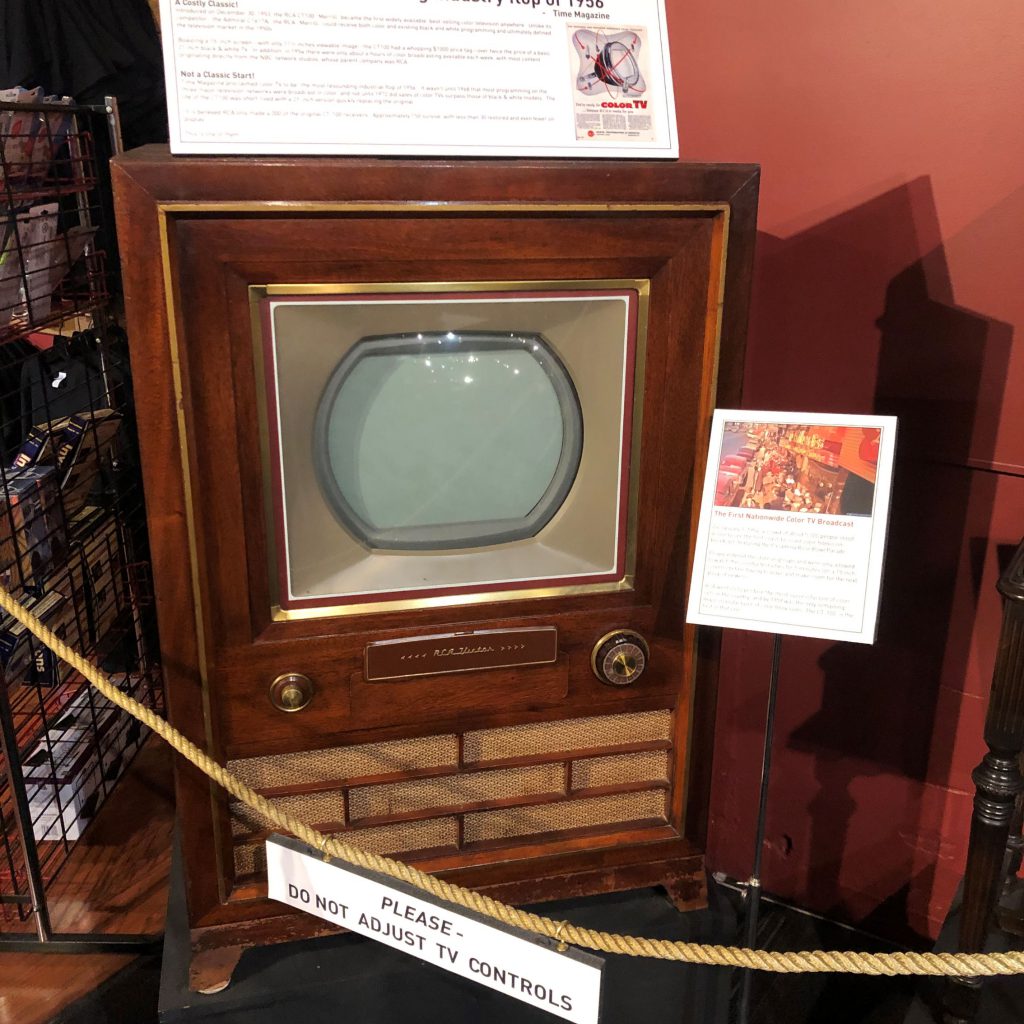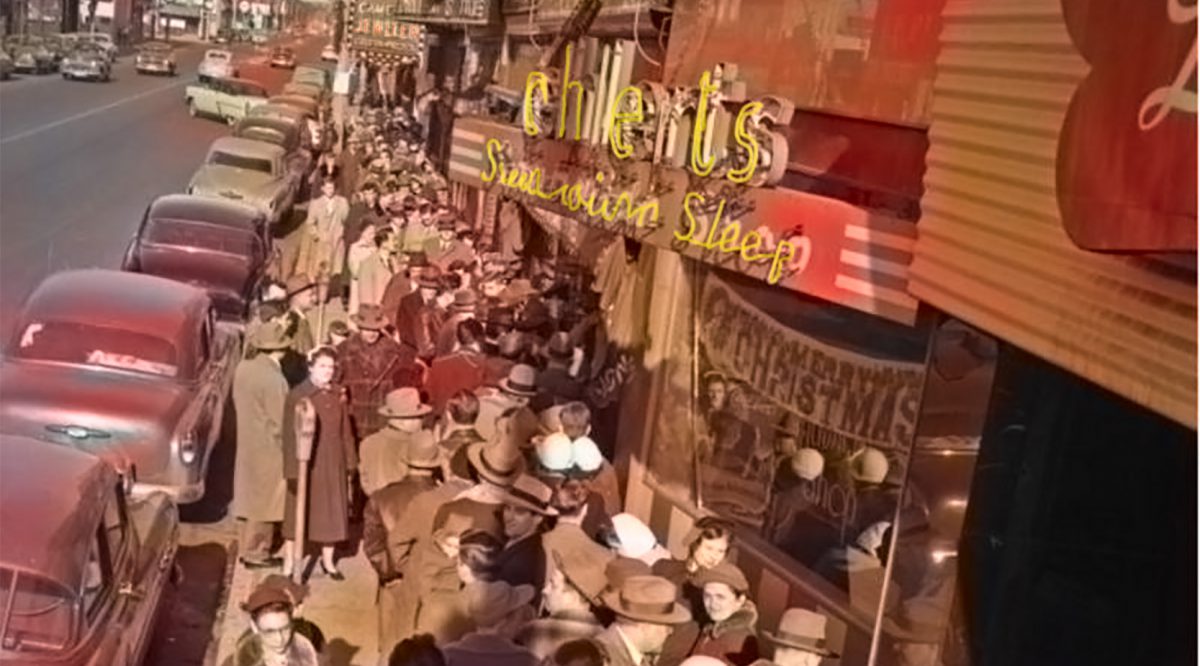
I’ll never forget the time I asked my Mother how she could possibly tolerate watching a colorized version of IT’S A WONDERFUL LIFE, a movie we enjoyed for years in beautiful black and white. Her response was surprising, immediate and unashamed: “I see the world in color,” she said, barely looking up from her popcorn, “not black and white.”
Mom, apparently, is not alone. Since television was first introduced, millions of Americans just like my Mother couldn’t wait to get color television and movies into their homes.
The development of color television had been a goal of corporate researchers and engineers since the 1940s. After World War II the Columbia Broadcasting System (CBS) began demonstrating its own sequential color system, using a specially timed multi-color wheel spinning in front of a black and white picture tube, but their results ultimately went nowhere.
In 1951, Radio Corporation of American (RCA) chairman David Sarnoff, unveiled a system that utilized a technology known as the “dot triad” system, which involved three separate electron guns to produce red, green, and blue colors. These colors would then combine to create the full spectrum of hues visible on the screen.
What made the RCA color system exceptional was its ability to also broadcast to existing black-and-white television sets, making it versatile in a way other competitors were not.
This led to the creation of the RCA CT-100 “Merrill”, named after RCA’s then-president J. P. Mitchell. Introduced on December 30, 1953—just in time to broadcast the Pasadena Rose Bowl Parade—the RCA CT-100 Merrill became the first widely available, bestselling color television anywhere, and a milestone in television history.
“The most resounding industry flop of 1956” – Time Magazine
When the CT-100 Merrill was first unveiled to the public, it generated significant excitement and curiosity. Color television was seen as a groundbreaking advancement that promised to transform the way people experienced entertainment in their homes. The public response to seeing color television for the first time was a mix of awe, amazement, and wonder.

Image Source: RCA CT-100 (earlytelevision.org)
Many were captivated at the ability to finally see their favorite show, movie, or sporting event in vibrant, living color. The allure of color television was so compelling that it sparked a rush of interest from both consumers and content creators.
Television networks began to experiment with more color programming, producing special broadcasts that showcased the capabilities of the technology. Major events, such as the Tournament of Roses Parade and the Rose Bowl football game, were among the first to be broadcast in color, attracting larger audiences eager to witness the new visual spectacle.
On January 1, 1954, according to the Milwaukee Journal, a crowd of about 5000 people stood in line to see the first coast-to-coast color television broadcast, featuring the Pasadena Rose Bowl Parade. People entered the store in groups and were only allowed to watch the colorful festivities for 5 minutes—on an 11 inch screen—before having to leave and make room for the next group of viewers.
A Costly Classic
Despite the initial excitement, the RCA CT-100 faced several challenges that limited its widespread adoption. First, the screen was only relatively small at 11.5 visible inches, and at $1000 the Merrill was considered too pricy, especially at a time when consumers could purchase a black and white version, with a bigger 21 inch screen, for around $300.
Another drawback was lack of color programming. In 1954 there was only about 6 hours of color broadcasting each week; and most of that originated directly from the NBC network studios, whose parent company was RCA. Very few local stations had color equipment in their studios.

Also, the CT-100’s technology was not fully compatible with existing black-and-white broadcasts, as viewers with regular black-and-white TVs would often see distorted or inaccurate colors when tuning in to color broadcasts.
The life of the first CT-100 was short, with a newer version quickly replacing the original, and featuring a larger 21-inch screen, and a substantial price cut (about $500). It wasn’t until the 1960s that color television became more accessible and affordable for the general public. Technological advancements, and reductions in manufacturing costs gradually made color more commonplace, and by 1972 sales finally surpassed black & white models.
RCA CT-100 Merrill TV voted as the Greatest Gadget of All Time!
Wired Magazine 2007 Readers Poll
TV Pioneer
The RCA CT-100 Merrill was the first major step in the evolution of color technology and programming. It marked the beginning of a transformation that leads all the way to the marvelous gadgets we so readily enjoy today.
It is believed RCA only made 4000 of these original CT-100 receivers. Only about 100 of the first Merrill series are known to exist today. The Museum is pleased to have one on permanent display in our galleries.
Stay grounded.
